#education strategies
Text
Key Strategies for Successful Higher Education Lead Generation - Read this blog for Key Strategies for Successful Higher Education Lead Generation.
0 notes
Text
Empowering Students with Neurodiversity: Nurturing Learning Differences with Sensitivity and Success
Learn effective strategies for supporting students with learning differences like dyslexia while maintaining sensitivity and respect. Explore insights on building strong relationships, tailoring teaching methods, and promoting student success.
Neurodiversity – What Are Learning Differences? Part 1
In this first of three segments on learning differences, we sit down with Annette Tofaeono, an expert in the field of neurodiversity, to discuss various aspects of learning differences.
Understanding Learning Differences
The term “learning differences” fits well for many of us, as it’s about people learning differently. We don’t all learn…

View On WordPress
#Annette Tofaeono#Building Relationships#Cultural Sensitivity#Dyslexia#Education Strategies#Graeme Smith#Inclusive Education#individualized learning#learning differences#Student Empowerment#student engagement#Student Success#Teaching Methods#thisisgraeme#Whanau Engagement
0 notes
Text
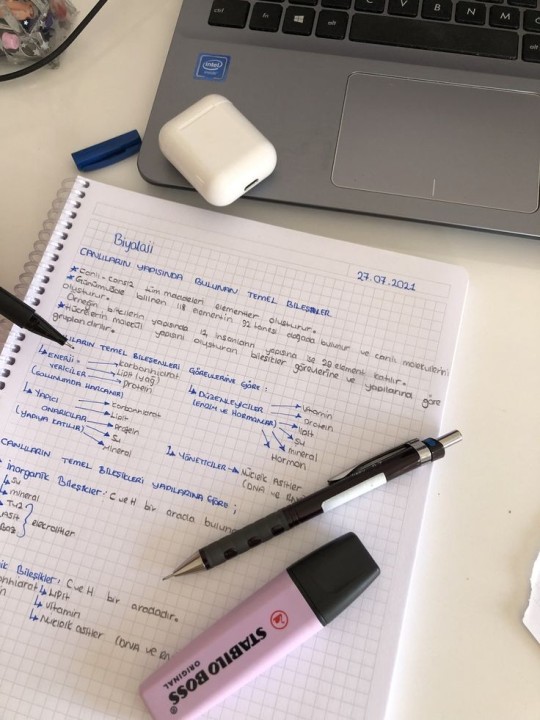

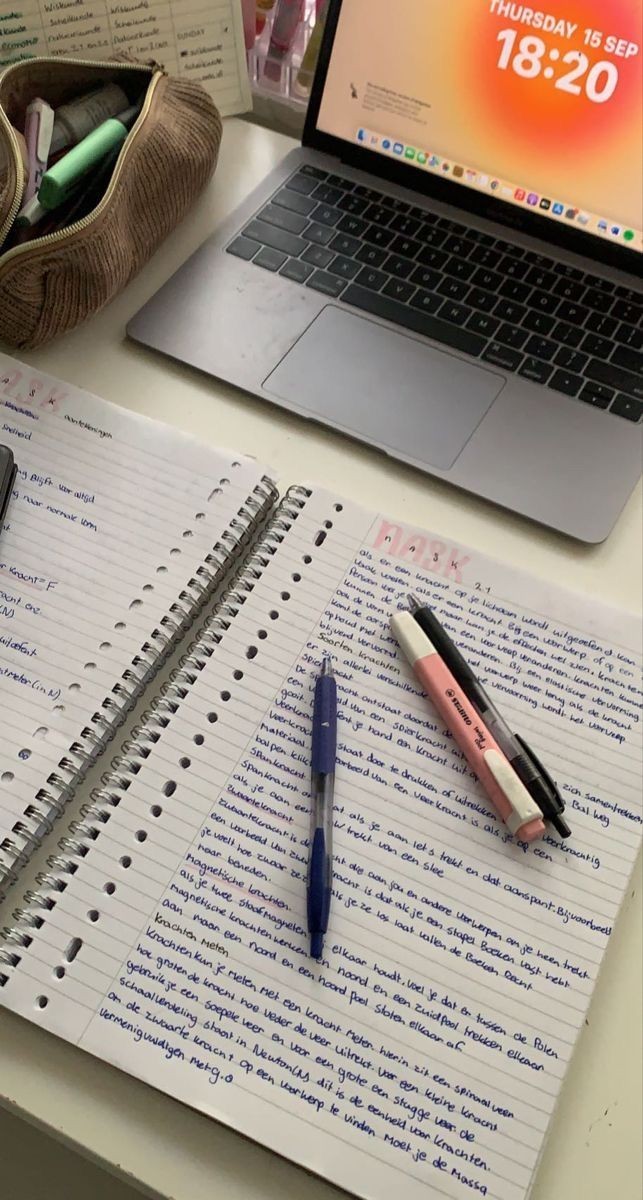
❥﹒♡﹒☕﹒ 𝘁𝗶𝗺𝗲-𝗺𝗮𝗻𝗮𝗴𝗲𝗺𝗲𝗻𝘁 𝘀𝘁𝗿𝗮𝘁𝗲𝗴𝗶𝗲𝘀 𝘆𝗼𝘂 𝗺𝗮𝘆 𝘄𝗮𝗻𝘁 𝘁𝗼 𝗸𝗻𝗼𝘄
𝟭. set SMART goals ( 📒 )
make sure your goals are specific, measurable, actionable, realistic and time-bound. this will help you maintain focus and track your progress over time. how many times has it been you and your unrealistic to-do list against the world? well, it seems that a mile-long to-do list is not a good ally at all. remember that you are a person and not a machine, and that just dedicating four hours to deep work and concentration is A LOT. be kind to yourself and don't overload yourself with more work than you can humanly do.
𝟮. daily planning ( 🧸 )
mea culpa because i'm the first one who doesn't plan their day. to-do lists generally stress me out and make me feel overwhelmed as if i don't manage to complete all the tasks an asteroid will end up hitting the earth. but i recognize that it is a good starting point. sometimes i have too many things to do and i end up doing nothing in total confusion, but having at least a general list to follow gives me more motivation. moreover do we want to talk about the dopamine released when you tick an empty box? marvelous. maybe don't write down tasks that are too onerous and demanding, break them into several smaller tasks, also try to write simple activities such as "drink a glass of water" every now and then. having these low-commitment activities will help you stay motivated while completing more important tasks.
𝟯. reverse-engineering method ( 🪴 )
start with the end goal and work backwards to plan the actions needed to achieve it. this helps you maintain clarity on the steps to take and focus on the most relevant actions. the best thing to do is plan based on the time available and do your best to stick to your daily goal.
𝟰. timer roulette ( ⏳ )
choose a task from your to-do list and set a random timer between 15 and 45 minutes. work on that task with all your concentration until the timer goes off. this helps you fight procastination and keep your mind fresh.
𝟱. mind mapping time ( 📍 )
before starting a study session, take a few minutes to create a mental map of the subject you need to cover. this helps you see connections between concepts and organize information more effectively.
𝟲. task batching ( 🫒 )
group similar tasks together and tackle them in batches. for example, reply to all emails in one session rather than doing so at scattered times throughout the day. this helps you reduce transition time between tasks and maintain focus. contrary to popular belief, human beings are not truly multitasking (only a few possess this great ability) and when we do multiple things together we do nothing but shift our attention from one task to another, greatly reducing the quality of our performance. if possible, try to avoid these switches that are harmful to your focus and concentration.
𝟳. the pomodoro method ( 🍅 )
okay, y'all probably already know this one because it became so popular in the last year but if you don't, the pomodoro method is a time management technique developed by francesco cirillo in the late 80s. it is based on the idea of working for short periods of time, usually 25 minutes, followed by a short 5 minute break. after four rounds of work, a longer break is taken, usually 15-30 minutes. this technique helps improve concentration and productivity, as it breaks down work into manageable tasks and offers regular breaks to rest and regenerate energy. i personally prefer the 50/10 ratio while i'm studying but you decide which time ratio is better for you, i find it really useful and it helps me a lot while i'm studying for my exams.
#college#education#school#academia#note taking#student#study aesthetic#study blog#study inspiration#study motivation#study notes#study space#study tips#student life#study community#studyblr#studyinspo#studyspo#uni student#academic validation#chaotic academia#light academia#dark academia#university life#university#uni life#time management#time management strategies#pomodoro method#productivity
326 notes
·
View notes
Text
Started reading dungeon meshi
#I like how Marcille is a by-the-books graduate but still tends to be more exasperated and doesn't always plan very far ahead#While Falin is very thoughtful in strategy despite most of her education coming from personal experience by playing hooky#^ I like to think her lessons w/ Laios cite spongebob episodes for reference#dungeon meshi#tumatawart#Audio is from a video titled ''Why Everyone Hates Wizards'' for context
1K notes
·
View notes
Text

UK 1987
107 notes
·
View notes
Text

Aero traded their coolass jacket for...whatever this is i made them wearing
#pkmn rejuv#rejuv OC: Aero#His name is Neil but i lowkey want to use different name#They were born in Hoenn so their starter is Torchic. He then moved to Paldea for education around age 10#Then become a transfer student to Aevium and graduated Axis university#He likes going to ruins and learning about history. Garufan civilization is one their interest but not because they are fan of them.#More like. Their ''magic'' methods are so bizzare to Neil that he just want to uncover the secret just to criticize on them.#They are a competitve player but not the type to be too serious in winning the most battle#They battle mostly because they just want to test out their newest strategy or observe others battling methods.#So like. Even after winning a badge. They still want to redo the fights just to try out new strategy#Is friend with Sonia. Mainly because they meet eech other a lot whenever Neil asked for few rematches with Valarie/Saki/Adam#Also they are nice to talk with even tho most of the times Sonia is the one doing the talking#Kieran's nickname for them is Litten#...........#Yeah this design feel like it didn't...convey their personality i writing here#KArts
149 notes
·
View notes
Text

#neptune#neptunianmind#education#books#books and reading#neptunian#mercuryneptune#study#propaganda#media strategy#media studies#educate yourself
20 notes
·
View notes
Text

Real Wealth ⚜️ comes from knowing yourself. When you understand your values and passions, you find deeper fulfillment and make choices that bring genuine happiness and a more meaningful life.
#Wealth#Knowledge#Self#Abundance#Wisdom#Growth#Success#Empowerment#Prosperity#Learning#Mindset#SelfDiscovery#Education#Enlightenment#Achievement#SelfImprovement#Fortune#Insight#SelfWorth#Legacy#Intelligence#FinancialFreedom#PersonalGrowth#Mastery#WealthBuilding#Clarity#SelfAwareness#Fulfillment#Strategy#SelfCare
19 notes
·
View notes
Text

The Cloward-Piven Strategy: 👇 "Orchestrating A Crisis So The Government Can “Solve” It"
For more information 👇
Imagine That 🤔
#pay attention#educate yourself#educate yourselves#knowledge is power#reeducate yourself#reeducate yourselves#think for yourself#think for yourselves#think about it#do your homework#question everything#ask yourself questions#cloward-piven strategy#government corruption#crisis actors
185 notes
·
View notes
Text

Requested by @hcbunzie
#the yukon trail#video games#gaming#video game polls#polls#tumblr polls#simulation#education#strategy
20 notes
·
View notes
Text
Bluey’s School (Glasshouse School) (2/?)
References in this post are primarily from this link: https://academics.hamilton.edu/government/dparis/govt375/spring97/Teacher_Training/tt4.html
Waldorf Schools
Any episode that includes Bluey’s school… right away you can tell that it is an atypical school. It is: it’s a Waldorf school. The teaching style, curriculum, etc. are all distinct from standard approaches.
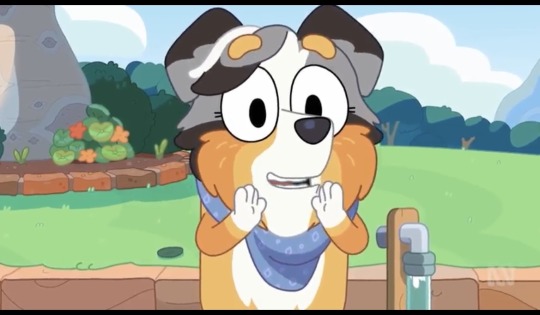
Here’s a deep dive on this based on some online research…
Rudolf Steiner, the founder of the first Waldorf school in Germany in 1919, believed that all children should be given "individualized" attention (rather than just those with special needs.)
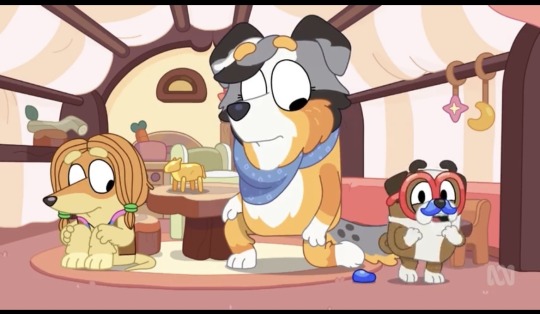
This style of education emphasizes a focus on the 'individual' rather than the 'group', with each child being valued for their individual accomplishments: every child is deserving of the same attention typically given to gifted and learning-disabled students in conventional educational streams.

Classes within these schools are structured in a unique system of "blocks" that focus on particular areas of study for a period of three to four weeks rather than the same subjects for the whole school year or semester.
As children grow older, more concrete and technical areas of subjects are introduced. Through this method, not only are the developing child's needs met, but so are their interests. As a result, students are kept actively engaged.
Features of this style of education
Key elements of the Waldorf educational approach include:
Teachers try to fully engage the individual student at each step by gearing the curriculum to their age and needs.
Teachers focus on the child's learning processes and achievements in all areas, not just the academic. In this way, the children can be developed as complete human beings.
Waldorf classrooms don't include computers, televisions, etc. Note how in “Typewriter”, Bluey thinks she needs a typewriter for a story but her teacher takes the focus off of typing a story and onto Bluey and her friends actually having an adventure.

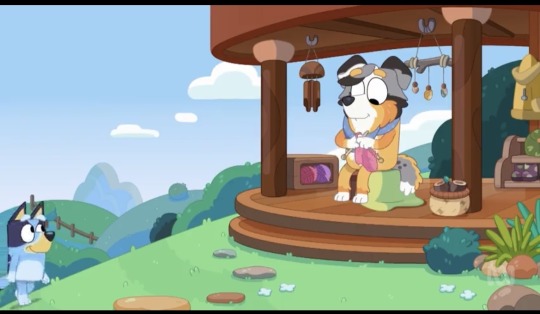
The Waldorf curriculum integrates arts and music into all areas of study. Daily activities include drawing, painting, singing, instrument playing…
Even the aesthetic atmosphere of the classroom is different to a standard school: The Tampa Tribune described a Waldorf school setting: "Imagine a classroom with old wooden tables, a backyard garden and children learning to knit and crochet. Where art and music is intertwined with every subject, students write their own textbooks and the toys are all handmade". Which is definitely the look/feel in Bluey’s school…

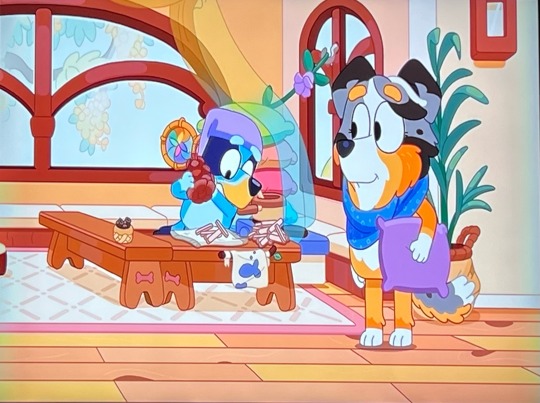
Additionally, a tenet of this style of education is that a focus on art and nature in education can lead to a greater appreciation for the beauty of life later on.
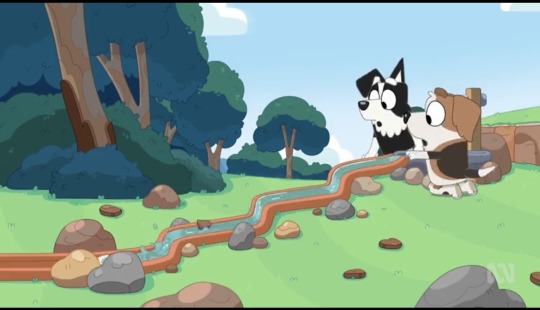
Waldorf schools encourage children to keep working on their imagination skills beyond kindergarten, using these skills to learn how to co-operate, share and interact. This concept of letting children progress into adulthood at their own level is a unique cornerstone of the Waldorf education method.

This concept of letting children progress into adulthood at their own level is a unique cornerstone of the Waldorf education method. This last piece is very key -- we seldom see anything being taught to the children; they’re free to do their own thing, make up activities, interact with one another, problem-solve, etc. and Calypso is there to gently guide them towards solutions occasionally.
So Why is This in “Bluey”?
The show “Bluey” is somewhat based on the show’s creator, Joe Brumm’s life experiences as a parent. Joe Brumm chose to have his daughter educated this way after she started the first grade. This is explained by Joe Brumm in an interview with the website The Father Hood:
"Bluey was still in embryonic form when Brumm’s eldest daughter started school. Her experience changed the course of the show.
'Play time was suddenly taken away from her, it was just yanked and seeing the difference in her was horrendous,' he says. 'There was no playing, there was no drawing, it was just straight into all this academic stuff. And the light in her eyes just died.'
Brumm researched alternatives for schooling and researched the value of play for child development. It is said that this is what led him to select Waldorf-style education for his daughter.
'Bluey is just one long extrapolation of that,' Brumm says. 'It’s to encourage people to look at play not just as kids mucking around, but as a really critical stage in their development that, I think, we overlook at their peril.'
Quotes from Joe Brumm from this link:
Closing comment & a caution
Personally, I think it’s interesting to see a different approach of educating children depicted in a TV show. It’s not “oddball”, it’s just a part of these dog-children’s lives.
I feel like the public is exposed to a lot of examples of children’s education on television and it’s generally portrayed in a negative light: e.g. The Simpsons, Bob’s Burgers… and even on shows like “Arthur” the kids were often complaining about school, or having something unpleasant/stressful take place while at school.

My only concern for Bluey and her classmates (and maybe it’s a long-term issue, nothing to worry about in the short term) is this: a potential downside to a Waldorf-style education would potentially be the sharp adjustment a student will encounter transitioning from this nurturing environment to one where that isn’t the case. It could well be unsettling.
…phew, ok, maybe one or two more posts about the school to come.
(Maybe, because of the source material, some of this post may sound a little like a giant sales pitch… it’s not meant to be. I think it’s interesting because it’s different; something else to learn about, etc.)
75 notes
·
View notes
Text
gonna learn some canva to better my chances of getting a new marketing job. to make it fun and Not Scary for myself I'm thinking of making little graphics themed around ponies I like, so i can get a little practice and post them here without feeling like they need to be the Best Thing Ever
#the deep fear of being visibly A Beginner as an adult online#I'm in the process of being laid of bc of the company losing money so#I'm applying to jobs but a LOT of marketing jobs#want people who do text of all genres and social media work and brand strategy and social media videos (all of which I can do)#but ALSO be able to create graphics#so I'm gonna learn canva for easy graphics dont worry I know thats not as good as actual graphic design#but you know thats a whole ass separate education#Im doing what I can ok
12 notes
·
View notes
Text
I’ve been thinking a lot recently about how much I wish we were taught in school how to interact with people online (and just how to use the internet in general) and then I remembered that I can type.
So, without further ado, I present…
How to Argue with People on the Internet
A (sort of) comprehensive guide on discussing everything from world peace to your blorbos
Forewordwarning: This is a long (but hopefully useful and entertaining) post. You have been warned.
SECTION I: The Decision
I have read SO many posts that essentially say “want to stop getting annoyed and fighting strangers? Just don’t! Simply do not!” and if that works for you? Fantastic! That is commendable and I salute you for it and I’m only a little bit jealous. (Okay, maybe more than a little bit jealous.) But if you’re like me—an absolute yapper, that is— you will likely find yourself in quite a few situations where you simply must yap. The urge is too strong. The stupidity of this collection of pixels on your screen that may or may not be the vessel for another human somewhere in the world is too much and you just have to tell them so. I understand. I will not tell you to hold back. I will, however, advise that before engaging with any individuals, you follow a few simple steps that I like to call “RAT”— otherwise known as Rest, Analyze, and Type.
Let’s say, for a moment, that you’ve just run into a comment hating on your favorite character in your favorite TV show. Yes, that one. You want to reply—but wait—you’ve just remembered to use RAT first! You intelligent human, you.
First, you REST. You take a moment to bookmark the comment (whether mentally or literally is up to you) and you step away from your phone (or you do what I do and look at that one youtube video of a parrot asking Alexa to fart 939472 times, you know the one) and you wait. Is this comment something you’re willing to take time out of your day to handle? There’s absolutely nothing wrong with deciding that it is, in fact, worth it— but it’s important to consider it first. You won’t ever have time to talk about the things you’re actually passionate about if you reply to every comment that bothers you. (Trust me— I’ve been there.)
Now, if you’ve decided to continue, reopen the comment and ANALYZE. This can mean many different things depending on the situation: is this comment generated by an AI? Is this person expressing a genuine opinion, or are they a troll? Have other people argued with them? If so, how did they respond? These are all important questions to ask, but it’s okay if you don’t know the answers to all of them. Just get the best information you can; you can always come back to this step later.
Finally, it’s time to TYPE. Let those words fly, friend! You tell ‘em!
SECTION II: Debating vs Fighting
So, you’ve RATted it up, and now you’ve decided it’s time to yap. But how to go about this? Should you be aggressive? Appeal to the enemy? What to do? Don’t worry, I’ve got another acronym for you! It’s time to take MOUSE into account: Motive, Openness, Understanding, Success, and Education.
First, think about your own MOTIVE. What do you want to accomplish? Do you want to change the other person’s mind? Are you unconcerned with changing their mind, instead going in with the intention to change the minds of others who might be reading through the conversation? Do you not care about changing anyone’s mind and simply want to discuss the topic at hand? All of these are valid, but they’re all very different. Deciding what your goal is prior to replying is one of the most important things about debating, whether it’s over the internet or face-to-face.
Once you’ve got that cleared up, it’s time to consider your OPENNESS and UNDERSTANDING. How open are you to potentially having your mind changed? Can you see a piece of truth in the other side of the argument? Do you understand where the commenter is coming from, or are they just being ridiculous? It’s okay to have opinions you aren’t open to changing on a whim— everyone has core beliefs that shape who they are as people. But sometimes looking at the other side through a lens of open-mindedness and a desire to understand is the most effective thing you can do. Give it a try— the worst thing that happens is the other person being just as bad as you thought they were.
Next, it’s time to address SUCCESS. What would succeeding look like here? This is similar to MOTIVE, but now we’re looking at the potential completion of the debate. What is the outcome you’re striving for?
Finally, EDUCATION. Is this a fact-based topic you want to educate people about, or is it purely opinion-driven? Either is fine, but if it’s fact-based, you should brush up on the facts of the situation— you don’t want to be caught in a lie and potentially humiliated, I hope. Also, misinformation on the internet is a huge issue. But mostly the humiliation thing.
Section III: Tips and Tricks
My last acronym contains an assortment of tips and tricks for internet usage and communication: Consent, Anonymity, Privacy, Yapping, Blocking, Apps, Reason, and Ability (CAPYBARA).
One of the most important things in life and on the internet is CONSENT. Now, this doesn’t mean you have to ask permission to voice your opinions— just that you should take into consideration the actual, living person on the other side of the screen. (Unless you’re arguing with an AI, in which case I suppose it probably doesn’t care much one way or the other). Ask before you DM people unless they state that their DMs are open. If someone blocks you, DO NOT make another account to harass them (yes, even if they’re really terrible). Consent online may look different than it does in real life, but it still follows the same ground rule: when in doubt, ASK.
ANONYMITY is another important thing to consider when you’re surfing among the virtual tides. Remember that even if someone displays their real name and picture on a website, you still don’t know them. They could be someone entirely different from the persona they’ve put up on the internet, and that’s okay. We all act differently depending on the situations and settings we’re in, and that’s dialed waaaay up when social media allows us to literally customize ourselves into what we want other people to see. That doesn’t mean you shouldn’t treat people as if they’re real, but it does mean that you should take everything with a grain of salt— especially if someone is being an absolute jerk.
Okay, PRIVACY is the one section in here that anyone under a certain age probably did learn in class— along with its annoying younger cousin, PIRACY (you wouldn’t steal a CAR, would you?) You probably know by now that you shouldn’t share personal data online, so I won’t go into this one too much in this post. There are a billion textbooks about it, and as important as it is, it’s not something I’m really qualified to cover. Just don’t do anything stupid and you should be fine.
YAPPING— everyone’s favorite thing to do on the internet! For the most part, this is a reminder that you should have fun. If you feel like you can’t yap about your interests in the space you’re in, maybe you should relocate— whether that’s to a different app, a different blog, or even just to a different comment section is up to you. You should feel free to voice your opinions and talk about the things you love (within reason—don’t get yourself on an FBI watchlist—but you get the idea).
BLOCKING is one of the most underrated features on many social media apps. There is absolutely nothing wrong with blocking someone and moving on. It doesn’t make you a coward; it makes you someone who values your own time and safety. You are never obligated to argue with someone just because they said so. And—this is one of my favorite internet secrets—you can block people you agree with. If someone’s posts are well-meaning and useful, but they upset you or make you uncomfortable? You can still block them, or mute/restrict them if the app you’re using allows it. You are not a bad person for not wanting to see things that upset you in your day-to-day life. You can support good causes without reading about tragedies every morning. Digging yourself into a depressive hole isn’t going to help anything. Please, please use the block button. It’s there for a reason.
APPS are another variable you should consider when catering your online experience. For instance, you can make a nuanced post on Tumblr and more realistically expect reasonable replies because you aren’t confined to a tiny amount of characters. Trying to express the same point on Twitter, however, likely risks people getting extremely angry at you due to the nature of the app not allowing nuanced conversations. That’s not to say Tumblr is necessarily superior— just that they’re different areas with different setups. The reason Twitter is so no-nuance a lot of the time isn’t just due to the people— the app is deliberately set up so that users can’t make multiple points in one post. This also attracts people who don’t want to have nuanced conversations, which feeds the cycle. This is an (extremely oversimplified) explanation of why most social media apps feel so separate from each other, even if you follow all the same people. You should know your audience—but you should also know your stage.
It’s important to have a certain amount of REASON and common sense when you’re talking to someone about the skrunkly little guys in your favorite movie. It’s not that you can’t be passionate—I once essentially made an entire powerpoint presentation about why I think my opinion about a fictional cat person is the correct one—but you need to remember that not everything is the same level of seriousness. Expressing an opinion about whether Team Rocket are actually villains is not the same thing as expressing an opinion about the upcoming US election. (Though I think Team Rocket could potentially do an okay job, to be honest. Meowth 2024?) You can 100% have intense, long discussions about fictional characters, but it’s never worth genuinely harming your own mental health or attacking someone else because of an opinion that ultimately doesn’t hurt anyone. It’s okay to agree to disagree.
Lastly, remember that a lot of this is not intuitive. Your ABILITY to make smart decisions online is a skill that takes time to develop (as is evidenced by 99% of past me’s Twitter posts) and it’s important to give yourself grace. As much as the internet hates to admit it, we all make mistakes. Just own up to those mistakes and move on. It’s okay to delete a post you made because you don’t agree with it anymore. It’s okay to come back to an argument and apologize for going too far. It’s okay to not be perfect. Accept the consequences of your own actions and move forward.
#i hope this is helpful#advice#internet#media literacy#yapping#professional yapper#controversy#internet drama#arguing#tips and tricks#tips and advice#tips and strategies#how tos#social media#debate#online safety#internet safety#education#safety#guidance#fyi#text post#yapyapyap#communities#fandom#online privacy#data privacy#pro tip#*demon noises* P R O T I P 👹👻💀😈#milesrambles
17 notes
·
View notes
Text
The fic has me thinking...... I'm bringing back the royal au because I know damn well Dazai would do absolutely anything to be your princess
#leo.spam#in my mind the titles could work based on roles instead of gender#so a princess/queen is someone who focuses on strategy while a prince/king is the warrior#though obviously keeping with traditional medieval nobility standards both are required to know about everything#like they both have to be very educated in languages arts etc on top of war/logistics
7 notes
·
View notes
Text

UK 1987
20 notes
·
View notes
Text
i am once again getting excited over stuff that isn’t even confirmed lmao but what if hypdream has a similar story format to arb s1 where it’s split into six separate stories centred around the divisions where the final boss of each story is the evil version of the division so you have to strategise how to defeat the divisions with the characters you have unlocked like what if i have to beat bat with bat would evil kuukou have priority and his ability might go off before i can seal evil kuukou’s myself idk how jyushi’s ability works but can i negate the damage he supposedly can heal by reflecting his attack phase back at him with hitoya’s would the three of their attack stats combined be enough to beat them if evil kuukou’s ability can be used more than once—
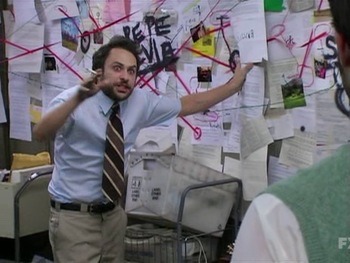
#vee queued to fill the void#i should start thinking up a hypdream tag lmao#everyone has been pull out their receipts that kr in in their heads and in their walls for the evil clones concept#and i too have an ichikuu comic i’d like to make that happened to have elements of evil ai lol#but that’s not my flex or win or whatever if hypdream involves strategy behind team comp and abilities#then that’s how ik kr is in MY head bc i’ve been begging for that for YEARS lmao#pls come thru kr 😭😭😭😭😭 i’m not good at video games period lmao but the most fun i’ve had playing games lately#were nu carnival and twst when i was still playing them i loved being able to battle with them!!!!!!!!#i want to raise different comps it’ll be lit lol dice’s random ability can feel safer to use with samatoki’s ability to store damage#put jiro with a character with a high attack stat plus rosho so rally and educate have peak synergy#hypnosis in its real form division made up of hifumi ramuda and rei LET—#LET ME IN THE LAB LET ME COOOOOOOOOOOOOOOOOOOOOK
11 notes
·
View notes